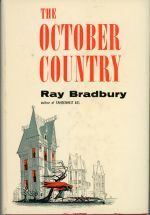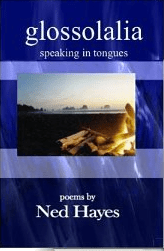Ned Hayes's Blog, page 5
November 10, 2019
Bookstores: Shakespeare & Company in Paris

Read my books at Shakespeare & Co.
Read more BOOKSTORE POSTS
One year ago, I had the distinct pleasure of visiting perhaps the most famous independent bookstore in the world with my daughter. Shakespeare and Company is the marvelous English-language bookshop in the heart of Paris, on the banks of the Seine, opposite Notre-Dame. Since opening in 1951, this store has been a meeting place for anglophone writers and readers, becoming a Left Bank literary institution. This lovely bookstore bookstore has been an oasis for generations of writers, including Allen Ginsberg, Henry Miller, Anaïs Nin, William Styron, Martin Amis, Zadie Smith, Dave Eggers and a myriad number of other “tumbleweed” writers who have lodged here, read here, and written here in this English-language literary oasis. 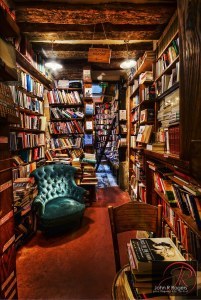
The bookstore is full of legends and stories about itself. To start with, its scavenged floorings include marble tiling that founder George Whitman stole decades ago from Montparnasse Cemetery and laid down in an abstract mosaic around the store’s “wishing well” — a hole in which customers toss coins to be harvested by poor writers who may need change for a cheap room in Paris. The wishing well also had a gas main that ran into it, and sometimes George would turn it on, and throw a lit match in, just for the excitement (and he once burned the hair off a visiting model with this trick. The model said she never received a proper apology.)
Writers often camped out in Shakespeare and Company overnight, and found themselves shanghaied into helping out with book sales and with (occasionally) babysitting the proprietor’s daughter Sylvia (who now runs the bookstore herself). It is also true that George once kicked Johnny Deep out of the bookstore (for refusing the generous offer of a bed for the night — George enjoyed entertainment in books, not in movies or TV, so he may not have known who Johnny Depp was at all). It’s also worth nothing that the building was originally a monastery — La Maison du Mustier. George liked to pretend he was the sole surviving monk, saying, “In the Middle Ages, each monastery had a frère lampier, a monk whose duty was to light the lamps at nightfall. I’m the frère lampier here now. It’s the modest role I play.”
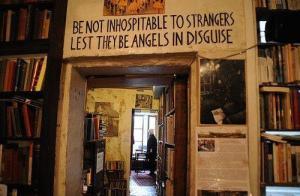 Some of the legends, however, are not true. For example, James Joyce is sadly not buried in the cellar (he is buried in Zurich). And it is also not true that George once stocked the wishing well with live seals (he wanted to do so, but never succeeded in getting the permits).
Some of the legends, however, are not true. For example, James Joyce is sadly not buried in the cellar (he is buried in Zurich). And it is also not true that George once stocked the wishing well with live seals (he wanted to do so, but never succeeded in getting the permits).
And there’s one more note to make about the history. This is the second version of a bookstore called Shakespeare and Company based in Paris. Sylvia Beach founded the original Shakespeare and Company in 1919. Her store at 12 rue de l’Odéon was a gathering place for the great expat writers of the 1920s and 1930s — Joyce, Hemingway, Stein, Fitzgerald, Eliot, Pound — as well as for leading French writers. In fact, James Joyce’s Ulysses was first published in its complete form by Beach because the government authorities in Britain and America deemed it obscene. Sadly, Beach closed up shop during the Nazi occupation in 1940 and never reopened.
When George’s store first opened in 1951, it was called Le Mistral. George changed it to the name Shakespeare and Company in April 1964—on the four-hundredth anniversary of William Shakespeare’s birth. Perhaps he had Beach’s blessing in this… perhaps he did not… the line between fiction and nonfiction was never quite clear, as with many stories told by the inimitable George Whitman.
Epigrams on the Walls of the Bookstore
LIVE FOR HUMANITY
FEED THE STARVING WRITERS
BE NOT INHOSPITABLE TO STRANGERS LEST THEY BE ANGELS IN DISGUISE
OLD SMOKY READING ROOM and BLUE OYSTER TEAROOM
From the first day George’s version of Shakespeare and Company opened, writers, artists, and intellectuals were invited to sleep among the shop’s shelves and piles of books, on small beds that doubled as benches during the day. Since then, the bookstore’s website notes that an estimated 30,000 young and young-at-heart writers and artists have stayed in the bookshop, including then unknowns such as Alan Sillitoe, Robert Stone, Kate Grenville, Sebastian Barry, Ethan Hawke, Jeet Thayil, Darren Aronfsky, Geoffrey Rush, and David Rakoff. These guests are called Tumbleweeds after the rolling thistles that “drift in and out with the winds of chance,” as George described.
I created this bookstore like a man would write a novel, building each room like a chapter, and I like people to open the door the way they open a book, a book that leads into a magic world in their imaginations.
-— George Whitman
In 2002, at the age of twenty-one, Sylvia Whitman, George’s only child, returned to Shakespeare and Company to spend time with her father, then eighty-eight years old, in his kingdom of books. In 2006, George officially put Sylvia in charge.
Sylvia introduced several new literary endeavors. In June 2003, Shakespeare and Company hosted its first literary festival, followed by three others. Participants over the years have included Paul Auster, Will Self, Marjane Satrapi, Jung Chang, Philip Pullman, Hanif Kureishi, Siri Hustvedt, Martin Amis, and Alistair Horne, among many others.
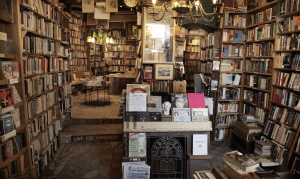 Although George Whitman passed away on December 14, 2011—two days after his 98th birthday—his novel, this bookshop, is still being written, both by Sylvia and by the thousands of people who continue to read, write, and sleep at Shakespeare and Company.
Although George Whitman passed away on December 14, 2011—two days after his 98th birthday—his novel, this bookshop, is still being written, both by Sylvia and by the thousands of people who continue to read, write, and sleep at Shakespeare and Company.
Sylvia recently published a new book: Shakespeare and Company, Paris: A History of the Rag & Bone Shop of the Heart. This 400-page book, the first ever about the shop’s history, features more than 300 images—including photographs, rare materials from the shop’s archive—and 70 editorial contributions from writers such as Allen Ginsberg, Anaïs Nin, Kate Tempest, Ethan Hawke, and Jeanette Winterson.
Shakespeare and Company is one of my literary touchstones, and I invite you to read my books at this amazing bookstore.

Epigram Written by George on the Wall When He Retired
INSTEAD OF BEING A BONAFIDE BOOKSELLER I AM MORE LIKE A FRUSTRATED NOVELIST. THIS STORE HAS ROOMS LIKE CHAPTERS IN A NOVEL AND THE FACT IS TOLSTOI AND DOSTOYEVSKY ARE MORE REAL TO ME THAN MY NEXT DOOR NEIGHBORS…. IN THE YEAR 1600, OUR WHOLE BUILDING WAS A MONASTERY CALLED ‘LA MAISON DU MUSTIER.’ IN MEDIEVAL TIMES EACH MONASTERY HAD A FRERE LAMPIER WHOSE DUTY WAS TO LIGHT THE LAMPS AT NIGHTFALL. I HAVE BEEN DOING THIS FOR FIFTY YEARS NOW IT IS MY DAUGHTER’S TURN.
— GEORGE WHITMAN
Pinterest – Ned Hayes Bookstore Board
Bookstores: Shakespeare & Company in Paris was originally published on Ned Hayes
Bookstores: Shakespeare & Co. in Paris

Read my books at Shakespeare & Co.
Read more BOOKSTORE POSTS
One year ago, I had the distinct pleasure of visiting perhaps the most famous independent bookstore in the world with my daughter. Shakespeare and Company is the marvelous English-language bookshop in the heart of Paris, on the banks of the Seine, opposite Notre-Dame. Since opening in 1951, this store has been a meeting place for anglophone writers and readers, becoming a Left Bank literary institution. This lovely bookstore bookstore has been an oasis for generations of writers, including Allen Ginsberg, Henry Miller, Anaïs Nin, William Styron, Martin Amis, Zadie Smith, Dave Eggers and a myriad number of other “tumbleweed” writers who have lodged here, read here, and written here in this English-language literary oasis. 
The bookstore is full of legends and stories about itself. To start with, its scavenged floorings include marble tiling that founder George Whitman stole decades ago from Montparnasse Cemetery and laid down in an abstract mosaic around the store’s “wishing well” — a hole in which customers toss coins to be harvested by poor writers who may need change for a cheap room in Paris. The wishing well also had a gas main that ran into it, and sometimes George would turn it on, and throw a lit match in, just for the excitement (and he once burned the hair off a visiting model with this trick. The model said she never received a proper apology.)
Writers often camped out in Shakespeare and Company overnight, and found themselves shanghaied into helping out with book sales and with (occasionally) babysitting the proprietor’s daughter Sylvia (who now runs the bookstore herself). It is also true that George once kicked Johnny Deep out of the bookstore (for refusing the generous offer of a bed for the night — George enjoyed entertainment in books, not in movies or TV, so he may not have known who Johnny Depp was at all). It’s also worth nothing that the building was originally a monastery — La Maison du Mustier. George liked to pretend he was the sole surviving monk, saying, “In the Middle Ages, each monastery had a frère lampier, a monk whose duty was to light the lamps at nightfall. I’m the frère lampier here now. It’s the modest role I play.”
 Some of the legends, however, are not true. For example, James Joyce is sadly not buried in the cellar (he is buried in Zurich). And it is also not true that George once stocked the wishing well with live seals (he wanted to do so, but never succeeded in getting the permits).
Some of the legends, however, are not true. For example, James Joyce is sadly not buried in the cellar (he is buried in Zurich). And it is also not true that George once stocked the wishing well with live seals (he wanted to do so, but never succeeded in getting the permits).
And there’s one more note to make about the history. This is the second version of a bookstore called Shakespeare and Company based in Paris. Sylvia Beach founded the original Shakespeare and Company in 1919. Her store at 12 rue de l’Odéon was a gathering place for the great expat writers of the 1920s and 1930s — Joyce, Hemingway, Stein, Fitzgerald, Eliot, Pound — as well as for leading French writers. In fact, James Joyce’s Ulysses was first published in its complete form by Beach because the government authorities in Britain and America deemed it obscene. Sadly, Beach closed up shop during the Nazi occupation in 1940 and never reopened.
When George’s store first opened in 1951, it was called Le Mistral. George changed it to the name Shakespeare and Company in April 1964—on the four-hundredth anniversary of William Shakespeare’s birth. Perhaps he had Beach’s blessing in this… perhaps he did not… the line between fiction and nonfiction was never quite clear, as with many stories told by the inimitable George Whitman.
Epigrams on the Walls of the Bookstore
LIVE FOR HUMANITY
FEED THE STARVING WRITERS
BE NOT INHOSPITABLE TO STRANGERS LEST THEY BE ANGELS IN DISGUISE
OLD SMOKY READING ROOM and BLUE OYSTER TEAROOM
From the first day George’s version of Shakespeare and Company opened, writers, artists, and intellectuals were invited to sleep among the shop’s shelves and piles of books, on small beds that doubled as benches during the day. Since then, the bookstore’s website notes that an estimated 30,000 young and young-at-heart writers and artists have stayed in the bookshop, including then unknowns such as Alan Sillitoe, Robert Stone, Kate Grenville, Sebastian Barry, Ethan Hawke, Jeet Thayil, Darren Aronfsky, Geoffrey Rush, and David Rakoff. These guests are called Tumbleweeds after the rolling thistles that “drift in and out with the winds of chance,” as George described.
I created this bookstore like a man would write a novel, building each room like a chapter, and I like people to open the door the way they open a book, a book that leads into a magic world in their imaginations.
-— George Whitman
In 2002, at the age of twenty-one, Sylvia Whitman, George’s only child, returned to Shakespeare and Company to spend time with her father, then eighty-eight years old, in his kingdom of books. In 2006, George officially put Sylvia in charge.
Sylvia introduced several new literary endeavors. In June 2003, Shakespeare and Company hosted its first literary festival, followed by three others. Participants over the years have included Paul Auster, Will Self, Marjane Satrapi, Jung Chang, Philip Pullman, Hanif Kureishi, Siri Hustvedt, Martin Amis, and Alistair Horne, among many others.
 Although George Whitman passed away on December 14, 2011—two days after his 98th birthday—his novel, this bookshop, is still being written, both by Sylvia and by the thousands of people who continue to read, write, and sleep at Shakespeare and Company.
Although George Whitman passed away on December 14, 2011—two days after his 98th birthday—his novel, this bookshop, is still being written, both by Sylvia and by the thousands of people who continue to read, write, and sleep at Shakespeare and Company.
Sylvia recently published a new book: Shakespeare and Company, Paris: A History of the Rag & Bone Shop of the Heart. This 400-page book, the first ever about the shop’s history, features more than 300 images—including photographs, rare materials from the shop’s archive—and 70 editorial contributions from writers such as Allen Ginsberg, Anaïs Nin, Kate Tempest, Ethan Hawke, and Jeanette Winterson.
Shakespeare and Company is one of my literary touchstones, and I invite you to read my books at this amazing bookstore.

Epigram Written by George on the Wall When He Retired
INSTEAD OF BEING A BONAFIDE BOOKSELLER I AM MORE LIKE A FRUSTRATED NOVELIST. THIS STORE HAS ROOMS LIKE CHAPTERS IN A NOVEL AND THE FACT IS TOLSTOI AND DOSTOYEVSKY ARE MORE REAL TO ME THAN MY NEXT DOOR NEIGHBORS…. IN THE YEAR 1600, OUR WHOLE BUILDING WAS A MONASTERY CALLED ‘LA MAISON DU MUSTIER.’ IN MEDIEVAL TIMES EACH MONASTERY HAD A FRERE LAMPIER WHOSE DUTY WAS TO LIGHT THE LAMPS AT NIGHTFALL. I HAVE BEEN DOING THIS FOR FIFTY YEARS NOW IT IS MY DAUGHTER’S TURN.
— GEORGE WHITMAN
Pinterest – Ned Hayes Bookstore Board
Bookstores: Shakespeare & Co. in Paris was originally published on Ned Hayes
October 27, 2019
Beat Box Breakdown: New Board Game

Christmas 2018 — I invented and created from scratch a new board game for my 16 year old son, Nick, whose favorite music genre (currently) is hip-hop and contemporary rap. The game is called Beat Box Breakdown, and I’m exploring options to fully productize and produce the game for the mass market (so yes, there are trademarks and patents in motion, because that’s how I roll).
Here are some pictures, as well as some of the instructions for the game.


Your hip-hop journey in Beat Box Breakdown travels in a clockwise spiral as you move from listener to garage rapping to freestyling in local venues to national online acclaim and then opening in national stadiums, culminating in Coachella, Los Angeles and finally opening at the Madison Square Garden.


Beat Box Breakdown: New Board Game was originally published on Ned Hayes
October 20, 2019
Shakespeare's Witches for Halloween
BY WILLIAM SHAKESPEARE
(from Macbeth)
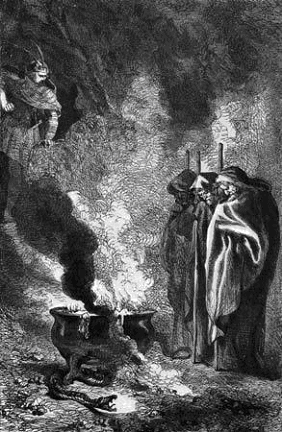
Double, double toil and trouble;
Fire burn and caldron bubble.
Fillet of a fenny snake,
In the caldron boil and bake;
Eye of newt and toe of frog,
Wool of bat and tongue of dog,
Adder’s fork and blind-worm’s sting,
Lizard’s leg and howlet’s wing,
For a charm of powerful trouble,
Like a hell-broth boil and bubble.
Double, double toil and trouble;
Fire burn and caldron bubble.
Cool it with a baboon’s blood,
Then the charm is firm and good.
Shakespeare’s Witches for Halloween was originally published on Ned Hayes
October 18, 2019
On Writing: Technique & Characterization in John le Carré
David John Moore Cornwell began writing novels about espionage and spies when he was working as a full-time intelligence agent for the British foreign service MI6 – a group whose very existence was not acknowledged by the British government until 1994. He wrote under the pen name John le Carré (“John the Square” in French) only because foreign intelligence service were forbidden to publish under their own names. When his third novel The Spy Who Came in from the Cold (1963) became an international best-seller, he left MI6 to become a full-time author, but obviously part of him has always stayed in the intelligence services – for all of his books concern themselves with secrets, lies, espionage and spycraft.
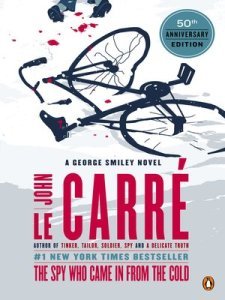
I’ve enjoyed reading John le Carré from time to time over the years, but only really became entranced with his craft last year, when I happened upon his masterwork Tinker, Tailor, Soldier, Spy and was enthralled with the subtle humor, the detailed characterizations and the incredibly slow pace of a highly suspenseful novel. How, I wondered, did le Carré manage to maintain tension in a novel that focused on a retired old bureaucrat named George Smiley? Smiley is pudgy, dowdy, old-school English, wears thick glasses, stutters when he talks at all, and when he does speak, expounds in soft syllables. He is a paper-pusher, an analyst, and has probably never held a gun in his life. But somehow, John le Carré makes this novel about Smiley crackle with suspense, and the novel kept me glued to the narrative for 100s of pages. It is a thick book, and a very complicated one, and I even know exactly how it ends, but I never once thought of putting it down. How did he do it?
There are many tools le Carré uses to build his work – like a pointillist master painter, every tidy English scene, every spare sentence and every bit of dialogue builds a gradual picture of enormous tension and incredible momentum. I can’t detail the volumes of education I gained about how to improve my own writing when I analyzed Tinker, Tailor, Soldier, Spy and more recently The Russia House, but I can illuminate a few bits of craft that le Carré is teaching me now.
First is the fact that le Carré paints a vivid picture when he describes any character. In fact, le Carré exaggerates when he paints a character. For example, he describes a new character entering a scene with metaphor (not simile) – writing “The first to speak was a distraught, floating man with baby-pink cheeks and baby-clear eyes and a flaxen jacket to match his straggling flaxen hair. His voice floated too” (40). 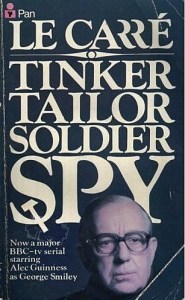 The vividness of this character description stays with the reader for much of the rest of the book, and from time to time le Carré reinforces it with a slight nod towards the “floating” quality of this man’s look – what is interesting is that this very quality later becomes a plot point, as the Americans distrust this man for his qualities of not-quite-there. le Carré forces readers to see characters as vivid movement on the page, and uses these slightly exaggerated characterizations as a way of burning the character into the reader’s mind, so that there is no doubt what the character is like when he later references them. Painting brightly at the outset allows your characters to last longer in the reader’s mind.
The vividness of this character description stays with the reader for much of the rest of the book, and from time to time le Carré reinforces it with a slight nod towards the “floating” quality of this man’s look – what is interesting is that this very quality later becomes a plot point, as the Americans distrust this man for his qualities of not-quite-there. le Carré forces readers to see characters as vivid movement on the page, and uses these slightly exaggerated characterizations as a way of burning the character into the reader’s mind, so that there is no doubt what the character is like when he later references them. Painting brightly at the outset allows your characters to last longer in the reader’s mind.
The other thing I am beginning to learn from reading closely into le Carré’s work is that a character’s interior life will only take you so far. What I write well, without conscious effort, is interior psycho-drama in which you experience a character’s inner world as they see it, without the intervention of outside elements such as dialogue or even physical descriptions of the surrounding terrain. It is the one thing that literature can do very well that is nearly impossible to replicate in film. For in film, there is no true imaginative interior monologue, no way of seeing the world in terms of interior metaphors and interior voice. There is, of course, the filmic device of a voice-over, but even that doesn’t provide the scrim of dream-like narrative that we as human beings overlay on visceral experience to make a sense-story of life.
We constantly are making a story of everything around us, relating it to other things, and this sense of a world-being-made-of-metaphor is what literature does so very well. When I go out in the world, every person and thing I encounter reminds me of other experiences – I am constantly building a chain of connections between my past experience and my past imaginative life and the life I am currently encountering. I am never just “out of my head” (except perhaps in moments of focused physical attention, such as playing sports or sex). Many great novelists such as DeLillo, Faulkner or McCarthy, spend much of their energy creating a tapestry that resembles this inner life, and that is why their best work is nearly un-filmable.
However, the more I read novelists who are telling a compelling story and are writing for plot, the more I am discovering that good literature can do both psycho-drama and external plot. To establish the point that le Carré is not all about plot and character description, let me first show that le Carré also does the interior psycho-drama thing well. He demonstrates this skill in chapter 7:
She pictured him a waif… lying in semi-darkness on the top berth reserved for luggage, listening to the smokers’ coughing and the grumble of drunks, suffocating from the stink of humanity… while he stared at the appalling things he knew and never spoke of. What kind of hell must that be, she wondered, to be tormented by your own creations? To know that the absolute best you can do in your career is the absolute worst for mankind? (172).
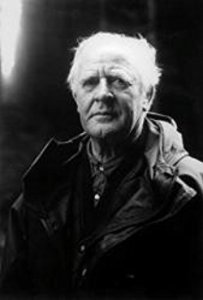 This passage serves as a good synecdoche for the book’s treatment of inner life. It moves clearly from one character’s apprehension of another in the world, and a clear description of how she pictured this person in their ‘waifish’ environment, to her conception of the character’s mindset and concerns. The passage touches on particulars of experience, then implies dark secrets, and then moves naturally to the broader questions of their shared humanity and the big questions of human morality. It is a solid bit of interior monologue.
This passage serves as a good synecdoche for the book’s treatment of inner life. It moves clearly from one character’s apprehension of another in the world, and a clear description of how she pictured this person in their ‘waifish’ environment, to her conception of the character’s mindset and concerns. The passage touches on particulars of experience, then implies dark secrets, and then moves naturally to the broader questions of their shared humanity and the big questions of human morality. It is a solid bit of interior monologue.
What le Carré is beginning to teach me though is how much more powerful such an complex and emotionally full interior space can be when it is prefaced and impacted by events and physical locations that are clearly described and that have action associated with them that has no “discussion” in the reader’s own head. Motion in the exterior world can be as suspenseful and entrancing as motion in the interior world. In The Russia House, le Carré writes mostly a straightforward narrative full of precise observations, character descriptions that are exacting and precise, and dialogue that sings off the page. Here is one sample passage that demonstrates his skill in this critical exterior narrative:
The woman was trembling. Not only with the hands that held her brown perhaps-bag but also at the neck, for her prim blue dress was finished with a collar of old lace and Landau could see how it shook against her skin and how her skin was actually whiter than the lace. Yet her mouth and jaw were set with determination and her expression commanded him.
“Please sir, you must be very kind and help me,” she said as if there were no choice.
….
What happened next happened quickly, a street-corner transaction, willing seller to willing buyer. The first thing Landau did was look behind her, past her shoulder. He did that for his own preservation as well as hers. But his end of the room was empty, the area dark.
“Got it with you then, have you dear?” he asked, peering down and smiling like a friend.
“Yes.”
What I’m learning from le Carré is that very precise description that does not paint with emotion, but instead paints with detail – every detail in the woman’s description denotes terror, every moment adding fear, and the whole scene creates a moment of enormous suspense for both the reader and the characters. Then, le Carré also adds dialogue that has awkward language, but also implores, finished by a commanding note at the end. Finally, there is the rush to action, coupled with the caution of looking around at the crowd. The dialogue is masterful, because it is so spare, with few adverbs at all. Landau, the character, gives a very English reply – he asks about the manuscript, but the manners he use imply that he is trying to be casual, trying to act as if it is of no great concern. Even though we as readers know that the rest of this 400+ page novel depends upon this scene, and even though both characters act as if their lives depend upon what happens with this manuscript handoff, the exchange is a studied moment of casual conversation. This, for me, demonstrates something I could take to heart: casual “throwaway” moments can be just as dramatic – even more so – than moments that are overwrought with adverbs and emotion.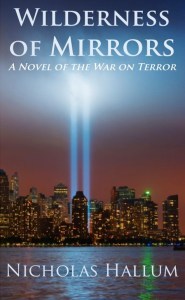
Overall, what is key to learn here for me is the necessity of moving vividly outside the character’s heads and into the world around them in a forceful way. The action can be constrained – as le Carré demonstrates with finesse in Tinker, Tailor, Soldier, Spy – but it must be external to the protagonist’s head-talk. If the writer makes the external world come to life in a very real way to the reader, then the internal landscape will matter even more when we return to that inner monologue. The truth is in the intersection between this outer world and this inner world – this is where the writer must make their art.
Since I wrote this post, I was inspired to complete my own spy novel, which is a bit of a twist on the Cold War and War on Terror espionage so well described by le Carré. My novel Wilderness of Mirrors will be released in 2020.
A literary update from NedNote.com
Readers can find my books at these bookstores:



On Writing: Technique & Characterization in John le Carré was originally published on Ned Hayes
October 6, 2019
The October Country
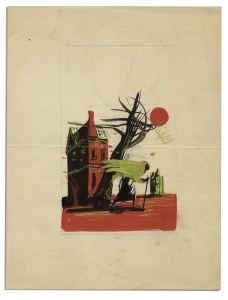 “October Country … that country where it is always turning late in the year. That country where the hills are fog and the rivers are mist; where noons go quickly, dusks and twilights linger, and mid-nights stay. That country composed in the main of cellars, sub-cellars, coal-bins, closets, attics, and pantries faced away from the sun. That country whose people are autumn people, thinking only autumn thoughts. Whose people passing at night on the empty walks sound like rain… .”
“October Country … that country where it is always turning late in the year. That country where the hills are fog and the rivers are mist; where noons go quickly, dusks and twilights linger, and mid-nights stay. That country composed in the main of cellars, sub-cellars, coal-bins, closets, attics, and pantries faced away from the sun. That country whose people are autumn people, thinking only autumn thoughts. Whose people passing at night on the empty walks sound like rain… .”
― Ray Bradbury, The October Country
The October Country was originally published on Ned Hayes
September 27, 2019
Poem: New Year
Rosh Hashanah – Sept 29 thru Oct 1, 2019
published in Twig, Seattle Washington
new year.
Ned Hayes
Rosh Hashanah comes
this year
on a day of cool wind,
a breathtaking
portent of winter
taking the world, rude lover
tossing
the sheets away.
in autumn
the sadness of all things
is greatest
for now
the world was created.
the new fruit, shot through
with decay:
birthed in the same
moment,
the racing seed and
the worm.

[Read more Poetry Posts]
Poem: New Year was originally published on Ned Hayes
September 10, 2019
Margaret Atwood's "The Testaments"
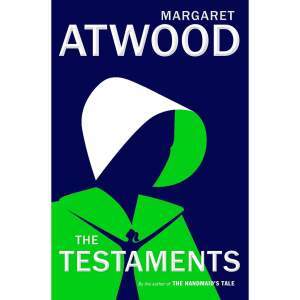 “The Testaments” by Margaret Atwood feels both more prescient and more hopeful than “The Handmaid’s Tale“. In 1985, women’s rights seemed assured and the world described in Gilead was a strange dystopia. Sadly, Gilead seems like a real possibility now. “The Teataments”, set 15 years after the events of “The Handmaid’s Tale,” shows that the Republic of Gilead is a theocracy teetering on the brink of self-immolation.
“The Testaments” by Margaret Atwood feels both more prescient and more hopeful than “The Handmaid’s Tale“. In 1985, women’s rights seemed assured and the world described in Gilead was a strange dystopia. Sadly, Gilead seems like a real possibility now. “The Teataments”, set 15 years after the events of “The Handmaid’s Tale,” shows that the Republic of Gilead is a theocracy teetering on the brink of self-immolation.
The story this time around is not just one woman’s inner turmoil and her often-lonely struggle to stay sane in the midst of a life of religious slavery. In “The Testaments”, instead of just the story of Offred, this book features the stories of three radially different women all caught in the same morass.
Agnes Jemima, who was raised to be a compliant Commander’s wife, questions what she knows. The vicious Aunt Lydia describes her past and protects herself by gathering secrets. And Daisy, an anti-Gilead activist, begins a dangerous mission: going undercover as a convert to the faith in hopes of helping to take Gilead down from within. Once again, Atwood has crafted a chilling cautionary tale about the suppression of women’s rights and a society twisted by that destruction.
In our current era, the story has a powerful and terrifying resonance because so many rights have been curtailed, and it is much easier to see how the lines of our society can be easily redrawn by self-interested charlatans using religion to further their own agendas. Freedom is under threat, and “The Testaments” shows us exactly how it happens, and what the consequences look like.
Today is the release of “The Testaments” — a feminist parable for our time and of our time.
Margaret Atwood’s “The Testaments” was originally published on Ned Hayes
September 9, 2019
In Memoriam: Poet Jane Mead
 I Have Been Living
I Have Been Living
by Jane Mead
I have been living
closer to the ocean than I thought –
in a rocky cove thick with seaweed.
It pulls me down when I go wading.
Sometimes, to get back to land
takes everything I have in me.
Sometimes, to get back to land
is the worst thing a person can do.
Meanwhile, we are dreaming:
The body is innocent.
She has never hurt me.
What we love flutters in us.
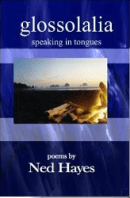
[Read more Poetry Posts]
In Memoriam: Poet Jane Mead was originally published on Ned Hayes
August 30, 2019
Art Tells The Truth
 I recently helped to organize a day-long reading of the complete Mueller Report at the Washington Center for the Performing Arts. A number of local theatrical artists and local elected public officials participated in the event, and it was a great success.
I recently helped to organize a day-long reading of the complete Mueller Report at the Washington Center for the Performing Arts. A number of local theatrical artists and local elected public officials participated in the event, and it was a great success.
A publication I founded, OLY ARTS, was also instrumental in sponsoring this event. Some people in my reading community and my artistic community have asked why arts people are involved in “politics.”
I’m not by nature a particularly political or partisan person. I only recently really started participating in questions related to national politics, and the reason I did so is that truth itself seems to be under attack recently, and the nature of truth is under attack. As an artist and a writer, I think it’s important for us to participate in upholding some common values. The truth may be hard to hear, it may even be painful, but we must start with the truth in order to grow and to create art and meaning. Here’s a longer explanation of our purpose in putting on this event, and the rationale for artists to be at the ramparts, defending truth.
——————-
OLY ARTS was established 4 years ago as a vehicle for reliable and professional journalistic coverage of events and cultural occasions that make our South Sound community rich in artistic experiences.
Art, at its core, tells the truth, or else it is not art. Artistic performances across our country, on every stage, communicate deep emotional and artistic truths which are difficult to articulate in any other medium. For this reason, the arts community is often the first victim when truth itself is discarded or abandoned.
Furthermore, one of the key hallmarks of journalism and a culture that understands journalism is a value for truth itself. Without a truthful understanding of factual information, we cannot create a shared cultural fabric and our common civic life decays.
Like many in our community and country, we have been saddened by a recent diminution of fact-based journalism and a weakening of understanding of the need for truth as a core value. Genuine and professional journalistic organizations, like the New York Times, The Wall Street Journal, CNN and even OLY ARTS, have been attacked in recent months for telling simple honest truths. In this environment, it is incumbent on citizens of all persuasions to stand up for basic truth telling.
 This is doubly true for any organization that supports the arts. Artists tell the truth: if we do not tell the truth, we cannot claim to create or support worthy art.
This is doubly true for any organization that supports the arts. Artists tell the truth: if we do not tell the truth, we cannot claim to create or support worthy art.
The arts suffers when truth is not valued or received. Communities die when the truth is not told or understood.
Therefore, when a basic factual document, created by a non-partisan group of apolitical officials, is attacked for its very existence, the arts community has a responsibility to stand up and state the truth, without fear or favor.
The journalistic community bears an even greater responsibility to do so, as the communicators of verified truth to our broader culture.
OLY ARTS is fortunate to consider ourselves members of both the artistic and journalistic communities – so there is no greater task that we could have undertaken than to support a truth telling endeavor. It is a core part of the OLY ARTS mission to ensure that truth is foregrounded in all that we do.
We were very gratified to see a group of five community organizations, including the Washington Center for the performing arts, step forward to create an event that provided a purely educational truth telling experience for our corner of the American public in the south sound. We told the truth.
This is an important pivotal time for American democracy and we are glad that as a community we were able to come together to hear factual information about our elections and the ongoing attack on free and fair elections in the United States.
By supporting this event, we upheld the role of truth in the American life, and we helped to build a shared civic culture that can understand and embrace the deeper truths given to us every day by artists.
— Ned Hayes, OLY ARTS Founder
Art Tells The Truth was originally published on Ned Hayes

